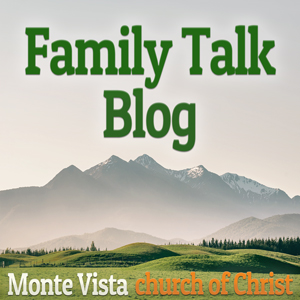The Old Testament uses the term Tabernacle in two ways. First, the Hebrew word refers to a tent, a temporary abode like the Israelites lived in during their wilderness wanderings. It is also translated as a dwelling place, home, and resting place. Second, it refers to the portable two-room tent and outer court God commanded be built where He could be worshiped with sacrifices and offerings. For this blog, we will consider the two-room tent and its components. The word is always translated as Tabernacle when referring to the temporary, portable structure where God’s presence would reside with the testimony of His covenant with Israel. Assembled, it was a rigid structure. Disassembled, it could be carried from Sinai to the promised land by hand and carts.
The walls were of acacia wood boards overlaid with gold. “Ten cubits shall be the length of each board and one and a half cubits the width of each board” (Exodus 26:16). Two tenons were cut into the base of each board to fit into the slots of interlocking silver sockets which formed the foundation for the walls. Twenty boards and forty sockets comprised each of the North and South walls. Eight boards and sixteen silver sockets made the West wall with special fittings for joining the corner pieces to the other two walls (Exodus 26:17-25).
The surface facing outward on each board was fitted with rings so that bars of acacia wood covered with gold could be passed through them, end to end, to align the boards and hold them rigid. Two curtains were suspended on poles between the North and South walls, one across the East opening and the other two-thirds of the way from the East curtain. The second curtain, often called the veil, separated the Holy of Holies, a square room containing the Ark of the Covenant, from the Holy Place, a space twice as long as wide.
The covering, or tent, for the Tabernacle, was made up of four layers. The first layer was made of fine woven linen with embroidered cherubim (a type of angel) in blue, purple, and scarlet colors. It was formed by ten panels joined together by loops and clasps and measured forty-two by sixty feet when assembled. The second layer was made of goat hair (probably like today’s Mohair fabric made from the hair of the Angora goat). A set of five curtains was joined to a set of six curtains by bronze clasps connected to fifty loops. This cover contained blue, purple, and scarlet colors and overlapped all sides of the tabernacle except the front, where a section was folded back. The third layer was made of ram’s skin dyed red. The fourth layer was a water-shedding layer made of skins taken from a type of clean animal that we cannot identify from the Hebrew text. The coverings gave a semblance of the heavens as a ceiling, two layers of insulation, and a water-shedding outer protective layer.
The veil between the Holy Place and The Most Holy Place was held up by four pillars of acacia wood overlaid with gold, set in silver sockets. The Ark of the Testimony was placed behind this veil and the mercy seat was placed on top of the Ark. Cherubim were mounted on either side of the mercy seat, and presented a physical representation of the throne of God as it was shown to John in (Revelation 4). The Golden Altar belongs with the Ark as mentioned by the Hebrew writer (Hebrews 9:3-4) and seen in (Revelation 6:9, 8:3-5, and 9:13). Since the incense had to be burned daily and the ark could be approached only one time each year (Leviticus 16), the Altar of Incense had to remain in the Holy Place with the Lampstand and Table of Shewbread. Some 1400 years later, the much larger veil in the Temple was torn from top to bottom when Jesus died on the cross, indicating that the way into God’s presence opened to all through Christ.
We can only imagine what it would be like to be with the priests working inside the Tabernacle. The Blue embroidered fabric above symbolizing the heavens and God’s domain, surrounded by the highly reflective gold walls illuminated by the seven lamps burning all night. The light would be reflected back and forth by the walls to fill the Holy Place with light giving just a hint of the Glory of God filling His throne room (Revelation 4 and 5) where there is no night. John had a vision of that glory as it was revealed to him. “I saw no temple in it, for the Lord God the Almighty and the Lamb are its temple. And the city has no need of the sun or of the moon to shine on it, for the glory of God has illumined it, and its lamp is the Lamb. The nations will walk by its light” (Revelation 21:22-24).
Will you be ready when “No longer will you have the sun for light by day, Nor for brightness will the moon give you light; But you will have the LORD for an everlasting light, And your God for your glory. “Your sun will no longer set, Nor will your moon wane; For you will have the LORD for an everlasting light” (Isaiah 60:19-20).
